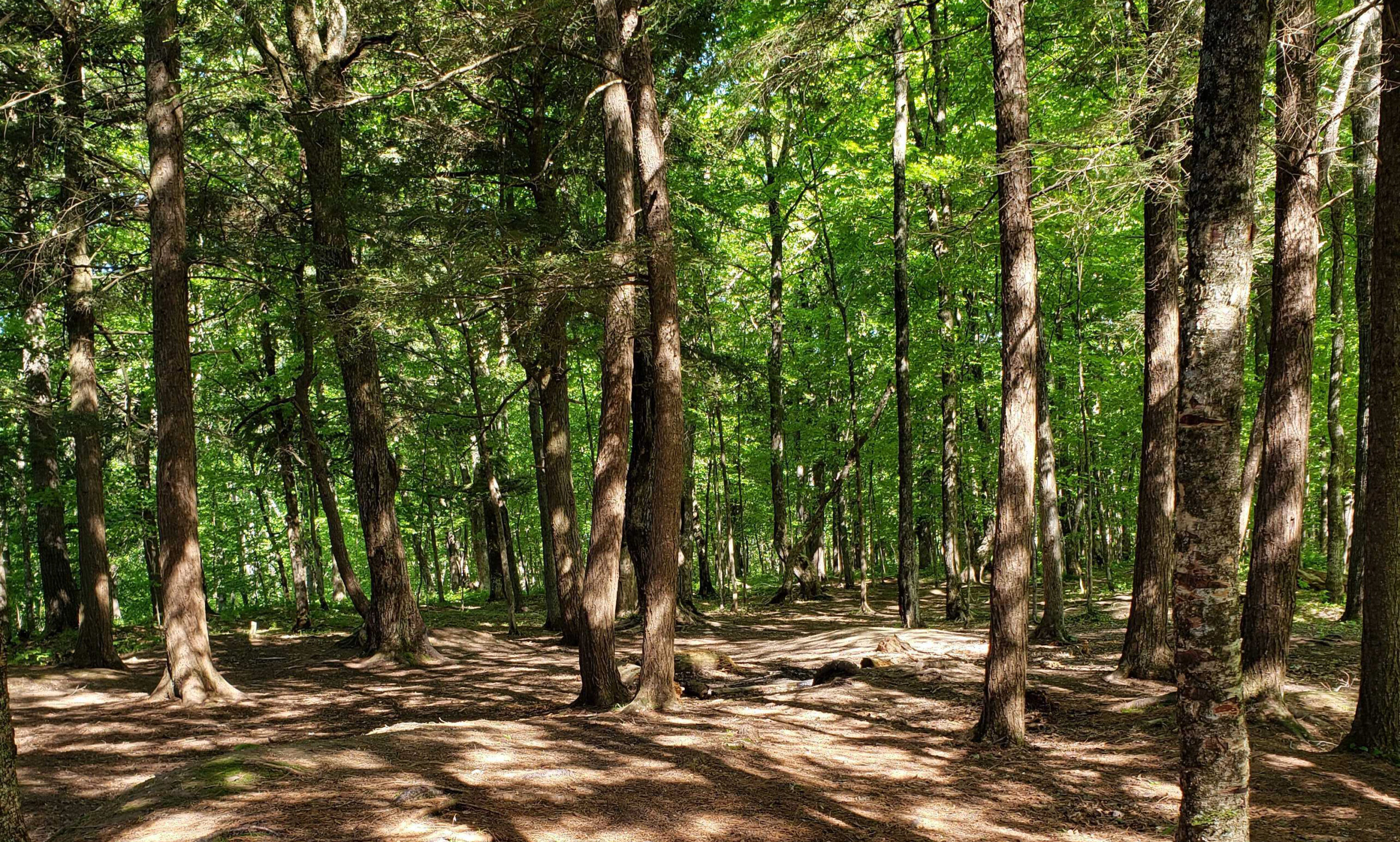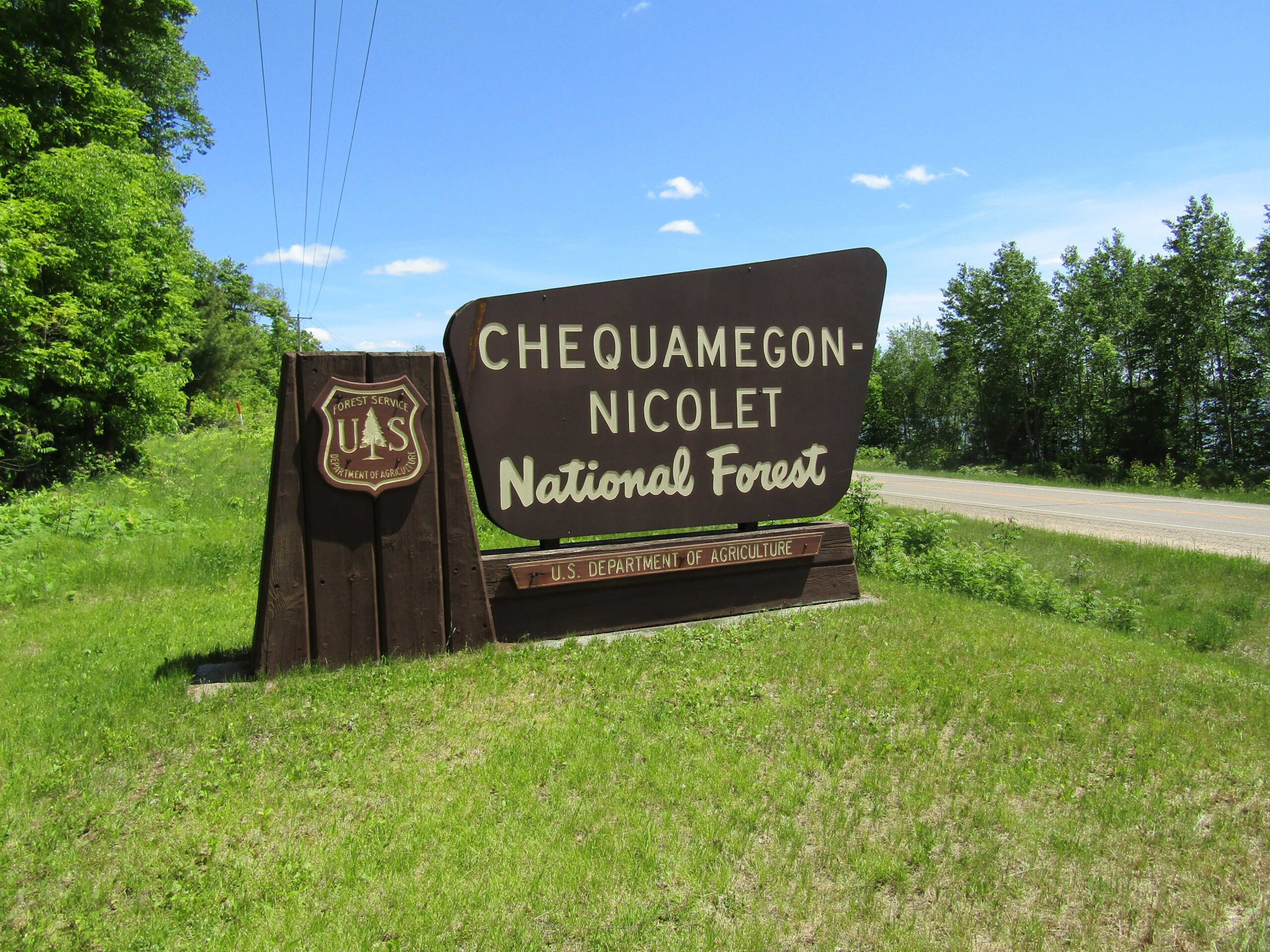
By Danielle Kaeding, Wisconsin Public Radio
This article was republished here with permission from Wisconsin Public Radio.
Some Wisconsin groups are urging the Biden administration to do more to protect mature and old-growth forests under its proposal to conserve those trees as logging interests are pushing back against changes.
Environmental groups say the U.S. Forest Service has received more than 1 million comments to protect old-growth forests from logging since President Joe Biden issued an executive order to conserve them two years ago. The directive called for reducing the risk of wildfires and developing policies to make the nation’s forests more resilient to climate change.
The U.S. Forest Service released a draft environmental impact statement of its plan to conserve older forests and limit logging, but the agency stopped short of a ban on logging old-growth forests. The Forest Service proposal would revise plans for 122 national forests, including the Chequamegon-Nicolet National Forest in Wisconsin.
In recent comments, groups like Sierra Club Wisconsin and the Environmental Law and Policy Center, or ELPC, are calling for an end to logging old-growth trees. Cassie Steiner, senior campaign coordinator with Sierra Club, said there’s a very small portion of those forests nationwide.
“The value that these older trees have, and these areas that have a healthy mix of ages of trees are so precious, and the current amendment would allow for harvesting in these areas,” Steiner said.
Environmental groups say the forests are crucial for storing billions of tons of carbon for decades or centuries. An initial inventory identified around 24.7 million acres of old-growth and 68.1 million acres of mature trees on national forest lands. That represents roughly 17 percent and 47 percent of the nation’s forests.
In Wisconsin, logging advocates say there’s no need to conserve old-growth trees in the national forest outside the normal planning process, including Henry Schienebeck, executive director of the Great Lakes Timber Professionals Association. The group’s members represent 14,000 workers in Wisconsin and Michigan.
“There’s designated old growth already,” Schienebeck said. “There’s a lot of (the forest) that’s already set aside, and we already have young successional forests that are getting too old and should be harvested.”
Around 864,000 acres or more than half of the Chequamegon-Nicolet National Forest has been deemed suitable for timber production, according to the forest’s plan. Even so, about 11,000 to 12,000 acres are harvested each year.
The forest products industry has a $37.8 billion economic impact in the state. The Wisconsin Council on Forestry also expressed concern about a one-size-fits-all approach to managing national forests.
“(A)n increase in a hands-off tactic to managing our local national forest lands could jeopardize our state’s forest industry, our local economies, and our ability to maintain vigorous, resilient forest ecosystems considering threats from insects, diseases, altered wildfire dynamics, and shifts in temperature and precipitation patterns,” the council wrote.

A sign designating the Chequamegon-Nicolet National Forest in Wisconsin. Rob Mentzer/WPR
In Wisconsin, the Chequamegon-Nicolet National Forest is estimated to contain around 61,000 acres of old-growth trees or roughly 4 percent of its 1.5 million acres of forestland.
Andy Olsen, senior policy advocate with ELPC, contends there are many more areas within the national forest that contain old-growth trees.
“What we’re seeing right now is that Chequamegon-Nicolet is aggressively logging old-growth to mature trees,” Olsen said.
He pointed to the Peerless project in Bayfield County and Fourmile project. The latter would log 12,000 acres in parts of Oneida, Vilas and Forest counties. The group petitioned to halt logging there, noting two-thirds of those stands are more than 80 years old.
The Forest Service did not respond to requests for comment. An agency spokesperson told WPR in February that the Fourmile project is being managed in line with the forest’s plan, adding that no timber harvests were planned in areas it defined as old-growth forests.
As work on changes to forest plans is ongoing, the agency said it continues to address goals of the Fourmile project, which includes reducing hazardous fuels and increasing the area’s resilience to disease and drought.
In June, the Forest Service released an analysis that found wildfires, insects and disease are the leading threat to mature and old-growth forests. The Great Lakes Indian Fish and Wildlife Commission, which represents Ojibwe tribes in Wisconsin, is asking the agency to incorporate Indigenous knowledge and conduct more consultation to consider those threats, as well as the effects of logging.
“For Tribal communities and economies to thrive, a consistent approach to management of old-growth forest with sufficient distribution, abundance, and ecological integrity (composition, structure, function, connectivity) must guide land management plans,” the commission wrote in comments.
The intertribal agency said the Forest Service’s definition of old-growth trees is inadequate, adding the agency should set aside half of each national forest for old-growth stewardship. The ELPC has also asked the agency to include numeric goals for expanding mature and old-growth forests and quantify their climate benefits, as well as the loss of carbon storage due to logging.
Schienebeck said forests should be managed and harvested because wood products will store carbon, but Olsen said the industry is exaggerating those benefits.
The Forest Service will consider comments as it develops a final environmental impact statement on the agency’s proposal, which is set to be completed this winter.
Wisconsin Public Radio, © Copyright 2024, Board of Regents of the University of Wisconsin System and Wisconsin Educational Communications Board.
Catch more news at Great Lakes Now:
Wisconsin Supreme Court to hear case with broad implications for PFAS cleanup
Farmers turn to ‘predator-proof’ fences to deter wolves in northern Wisconsin
Featured image: Chequamegon-Nicolet National Forest in northern Wisconsin. Liz Dohms-Harter/WPR




